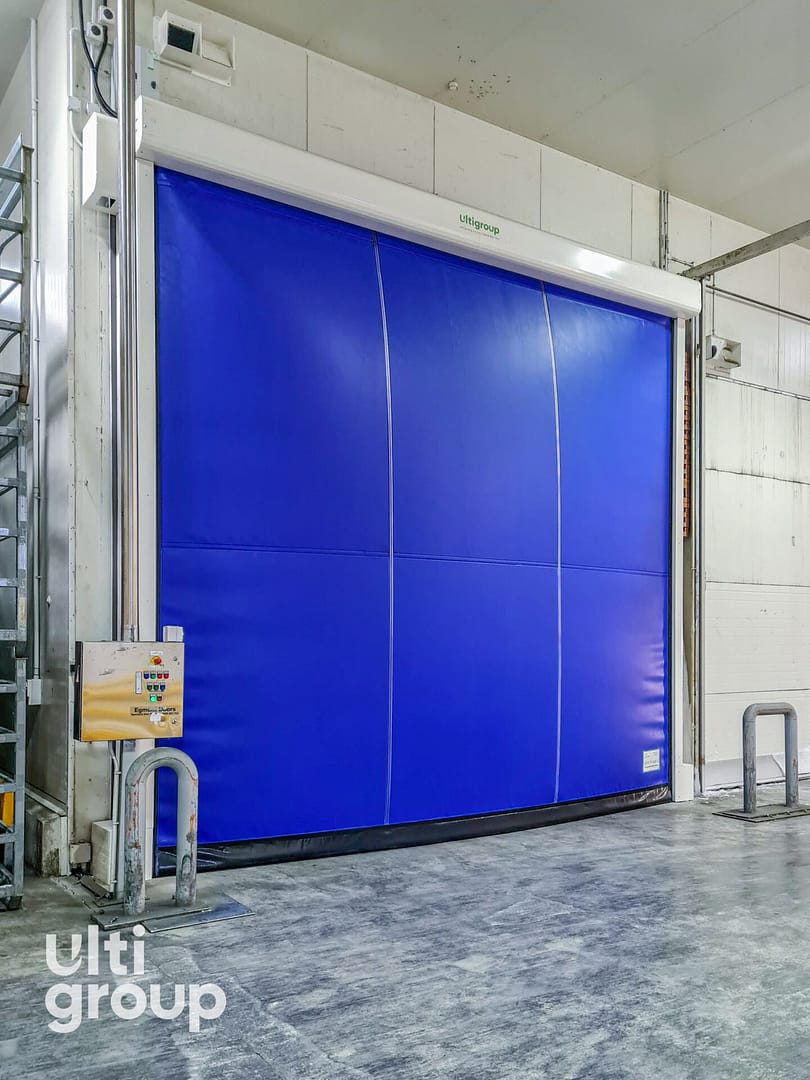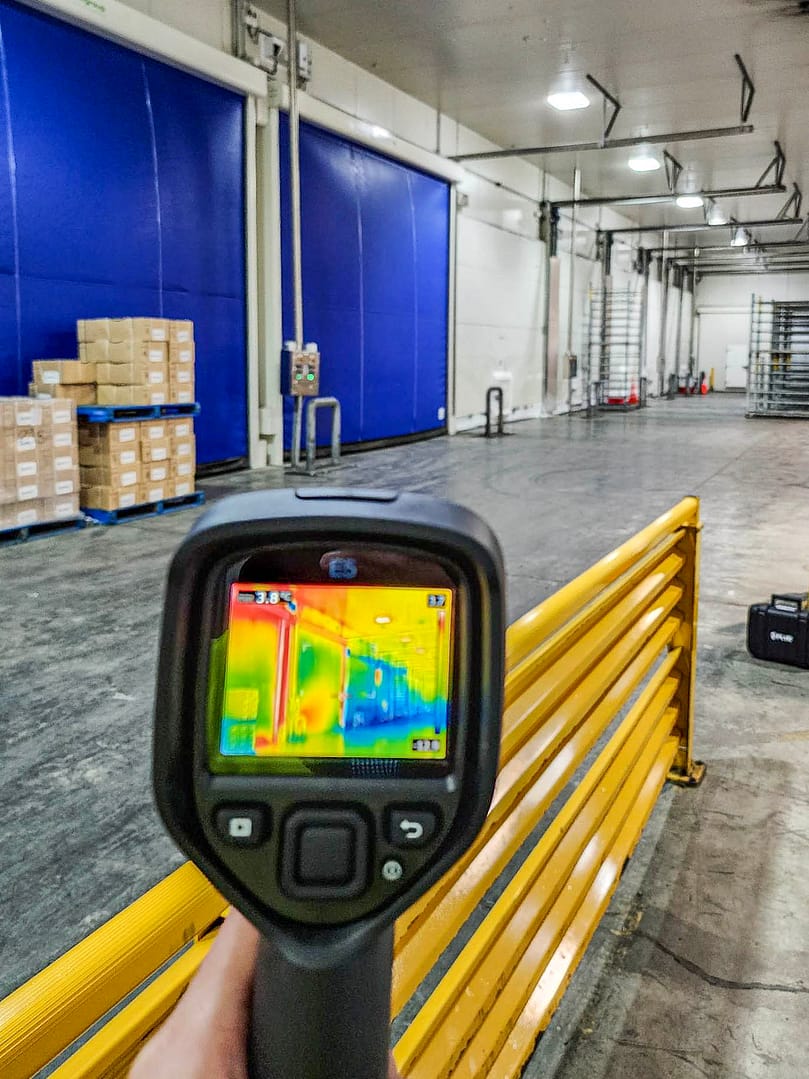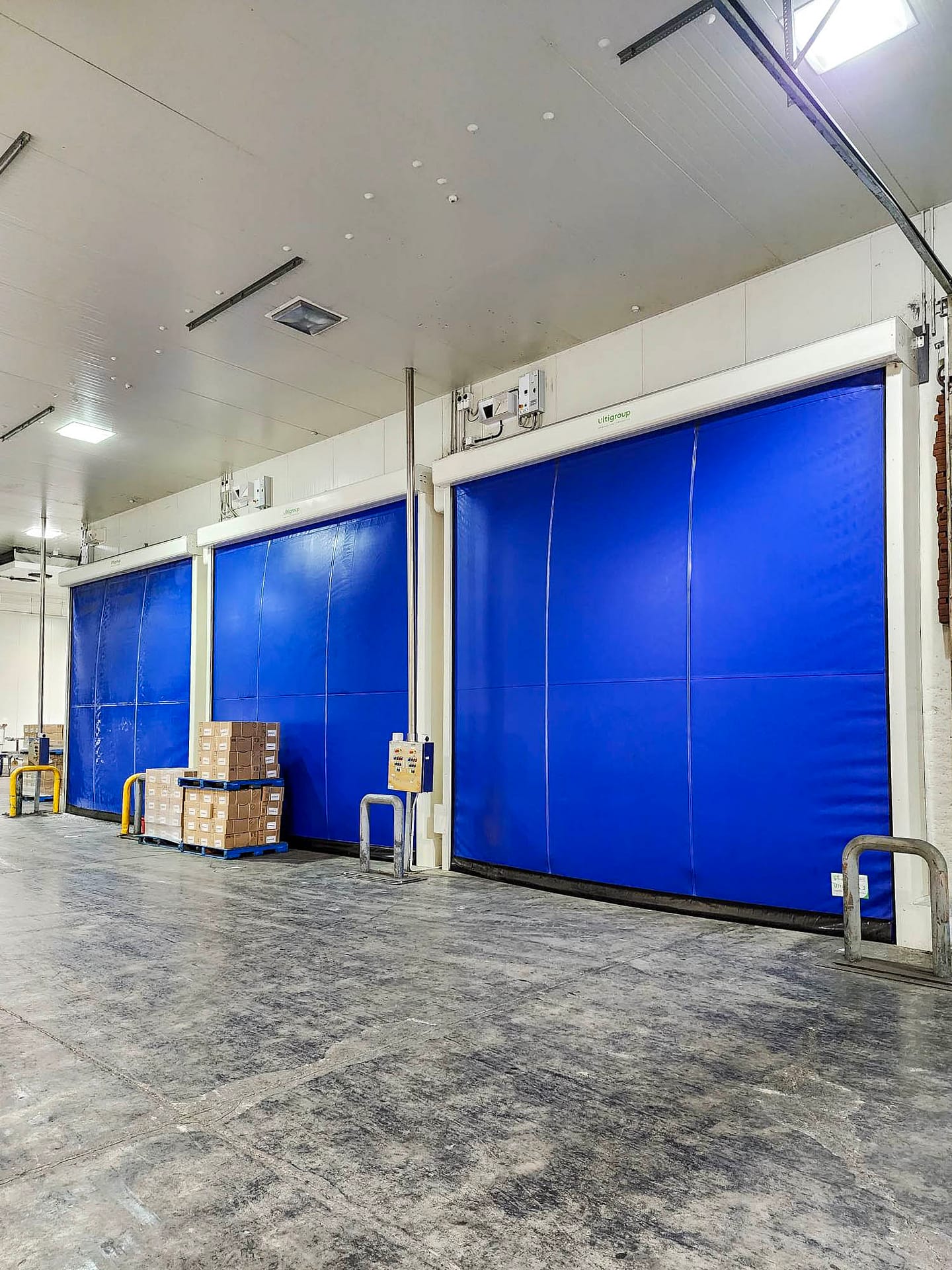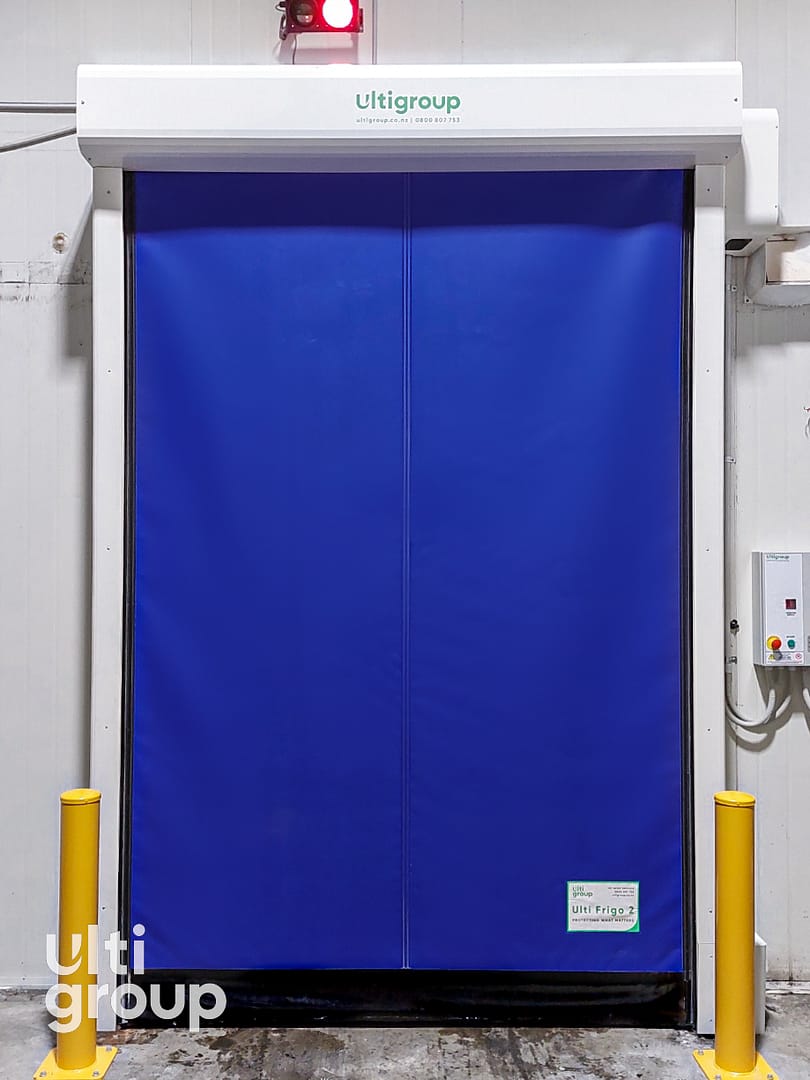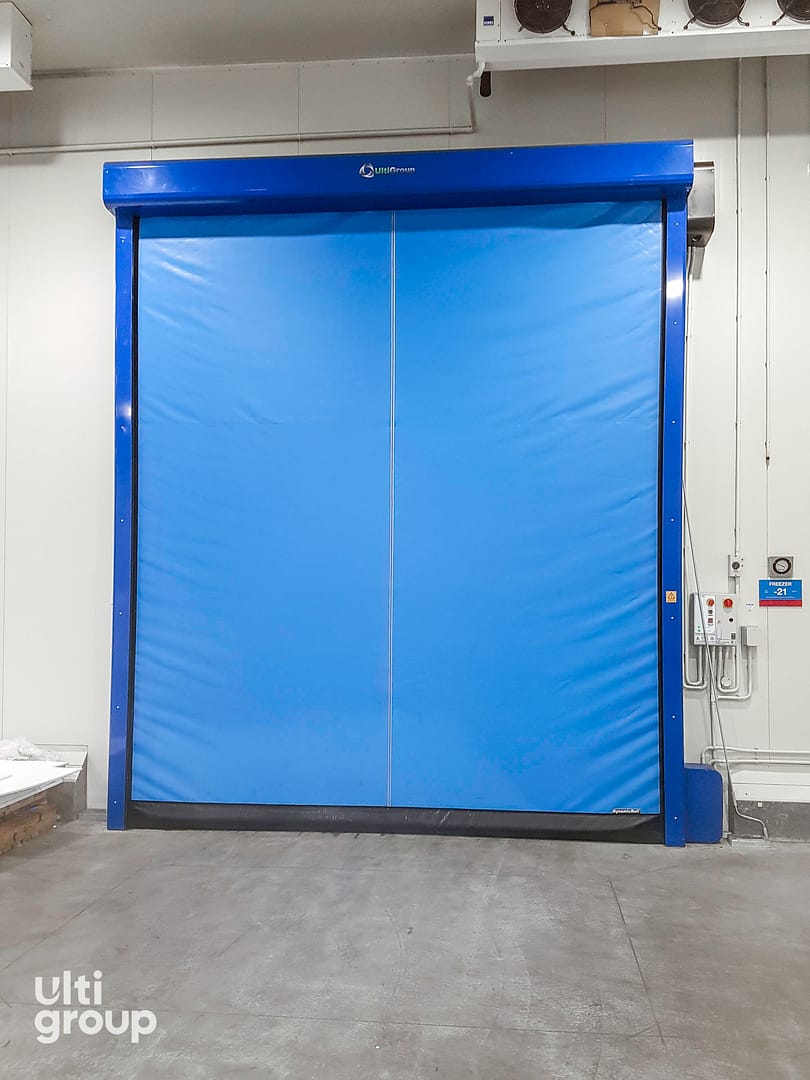Ulti DuoTherm Blast Door
Double-Insulated Blast Freezer Door
Need a durable, insulated door to withstand the temperature and pressure extremes of the blast freezer environment?
Formerly known as Ulti Frigo 2 Blast door, this door protects your people and products with this compact and energy-saving design.
1m/s
Max speed
5.2x5.5
Max size (WxH)
Class 2
Wind Resistance
1.5
U-Value (W/m2K)
* May vary dependent on product configuration
During blast cycles, the Ulti DuoTherm Blast’s innovative double curtain creates a tight seal against high pressure, with a treated air gap between them for ultimate insulation.


✓ Compact Design – for restricted building clearances and maximising valuable floor space.
✓ Improves Safety – eliminates ice build-up, reducing the risk of harm to personnel.
✓ Thermal Insulation – innovative double-insulated curtain system to withstand pressure extremes and maximise thermal efficiency.
✓ Low Lifetime Cost – innovative track design provides fewer maintenance issues and less downtime.
✓ Enhanced Productivity – fast opening times improve site efficiencies while reducing ice build-up and energy costs.
✓ Durable – ideal for use in extreme and high-pressure environments
✓ Kiwis for Kiwis – locally produced in NZ
Features
Take a closer look
Hover over the dots to find out more about the unique features of this door

Air-pressure retention guides to withstand the pressure of a blast freezer
 Dual curtains that rise together, enhancing the insulation and the ability to withstand the pressure of a blast freezer
Dual curtains that rise together, enhancing the insulation and the ability to withstand the pressure of a blast freezer
Dual heater blowers that blow treated air into the gap between the curtains for ultimate insulation against blast freezer temperatures
Ulti DuoTherm Blast Door
Resources
Videos
Downloads
FAQs
Videos
Downloads
FAQs
How Does the Dual Curtain Insulation System Work?
How Does the Dual Curtain Insulation System Work?
The door has a revolutionary design where treated air is emitted into the space between the two curtains, creating an effective insulation layer that prevents temperature transfer. This works on the same principle as double-glazed windows, which use two panes of glass with a sealed gap between them to reduce heat transfer and improve energy efficiency.
